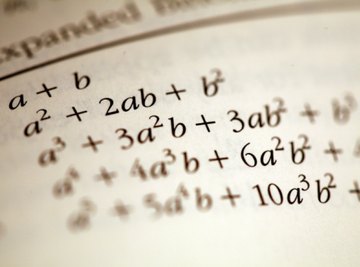
Multiplication and addition are related mathematical functions. Adding the same number multiple times will produce the same result as multiplying the number by the number of times the addition was repeated, so that 2 + 2 + 2 = 2 × 3 = 6. This relationship is further illustrated by similarities between the associative and commutative properties of multiplication and the associative and commutative properties of addition. These properties relate that the order of the numbers in an addition or multiplication number do not change the result of the equation. It is important to note that these properties only apply to addition and multiplication and not to subtraction or division, where changing the order of the numbers in the equation will change the result.
Commutative Property of Multiplication
When multiplying two numbers, reversing the order of the numbers in the equation results in the same product. This is known as the commutative property of multiplication and is quite similar to the associative property of addition. For example, multiplying three by six equals six times three (3 × 6 = 6 × 3 = 18). Expressed in algebraic terms, the commutative property is:
or simply
Associative Property of Multiplication
The associative property of multiplication may be viewed as an extension of the commutative property of multiplication and parallels the associative property of addition. When multiplying more than two numbers, changing the order in which the numbers are multiplied, or how they are grouped results in the same product. For instance, (3 × 4) × 2 = 12 × 2 = 24. Changing the order of multiplication to 3 × (4 × 2) produces 3 × 8 = 24. In algebraic terms, the associative property may be described as :
Commutative Property of Addition
It may be helpful to remember the associative and commutative properties of addition in reference to the associative and commutative properties of multiplication. According to the commutative property of addition, two numbers added together results in the same sum whether they're added forwards or backwards. In other words, two plus six equals eight and six plus two also equals eight (2 + 6 = 6 + 2 = 8) and is reminiscent of the commutative property of multiplication. Again, this may be expressed algebraically as
Associative Property of Addition
In the associative property of addition, the order which more than three or more sets of numbers are added together does not change the sum of the numbers. Thus, (1 + 2) + 3 = 3 + 3 = 6. Just as in the associative property of multiplication, changing the order does not change the result since 1 + (2 + 3) = 1 + 5 = 6. Algebraically, the associative property of addition is
References
About the Author
David Chandler has been a freelance writer since 2006 whose work has appeared in various print and online publications. A former reconnaissance Marine, he is an active hiker, diver, kayaker, sailor and angler. He has traveled extensively and holds a bachelor's degree from the University of South Florida where he was educated in international studies and microbiology.
Photo Credits
Jupiterimages/Photos.com/Getty Images
